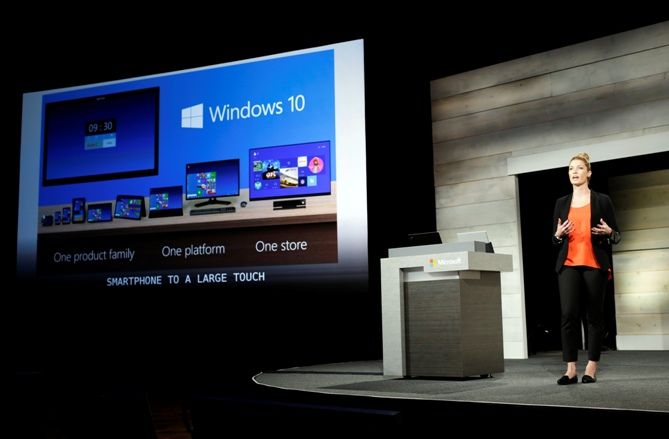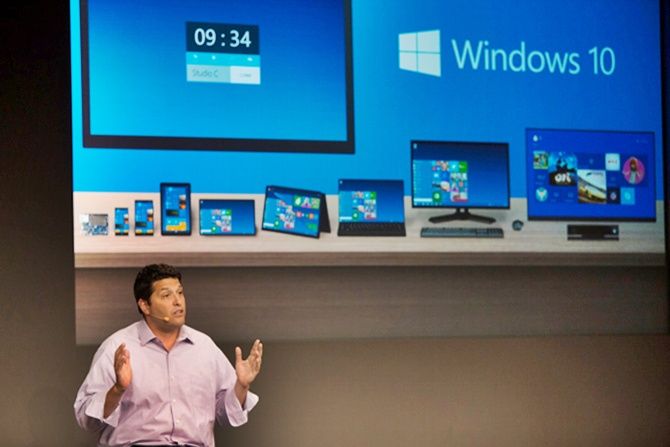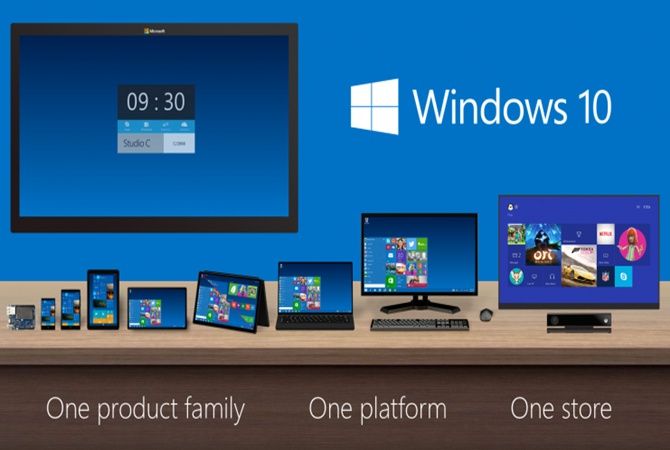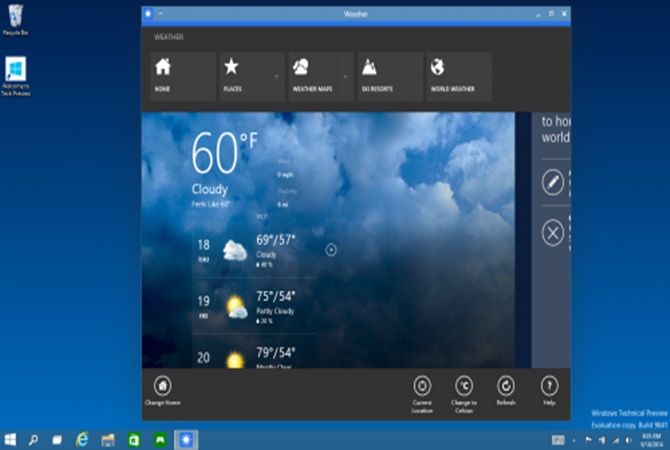Microsoft said its wire-free Microsoft HoloLens device will be available around the same time as Windows 10 this autumn
Microsoft Corp surprised the tech world on Wednesday with a prototype hologram visor that can bring the Minecraft video game, Skype calls and even the landscape of Mars to three-dimensional life.
The ageing tech pioneer, which long ago lost the mantle of the world's most inventive company, is making a bold play to regain that title in the face of stiff competition from Google Inc and Apple Inc.
Virtual or enhanced reality is the next frontier in computing interaction, with Facebook Inc focusing on its Oculus virtual reality headset and Google working on its Glass project.
Microsoft said its wire-free Microsoft HoloLens device will be available around the same time as Windows 10 this autumn.
Industry analysts were broadly excited at the prospect, but sceptical that it could produce a working model at a mass-market price that soon.

"That was kind of a 'Oh wow!' moment," said Mike Silver, an analyst at Gartner who tried out the prototype on Wednesday.
"You would expect to see a relatively high-priced model this year or next year, then maybe it'll take another couple of years to bring it down to a more affordable level."
Microsoft does not have a stellar record of bringing ground-breaking technology to life. Its Kinect motion-sensing game device caused an initial stir but never gripped the popular imagination.
The company showed off a crude test version of the visor -- essentially jerry-rigged wires and cameras pulled over the head -- to reporters and industry analysts at a gathering at its headquarters near Seattle.
It did not allow any photographs or video of the experience, but put some images on its website.
Microsoft has been working on the top-secret project for a few years, and showed off a number of scenarios: manipulating virtual objects that can be sent to a 3D printer, creating a Minecraft-like game environment in a room and letting users point to objects on the other end of the line in a Skype video call.

Most realistically, it demonstrated a lifelike panorama of the surface of Mars gathered from NASA's Curiosity Rover.
NASA has already been working with Microsoft to develop software called "OnSight," which will allow scientists on earth to virtually explore and plan experiments on Mars.
"It is incredible and surprised me in how far the state of the art has progressed with holograms. I kept waiting for Princess Leia to appear," said IDC analyst Al Hilwa, referring to the Star Wars character.
"But the future wildcard is whether a significant chunk of the population will be willing to wear such gear.
“We also have to wait and see what compelling applications emerge and how broadly life-changing they are," he added.

Executives also showed off an Xbox app for games on Windows 10 and a new version of its browser code named 'Spartan,' which lets users make notes on Web pages and share them.
Windows 10 now comes as a free upgrade
Microsoft will give away its upcoming Windows 10 operating system as a free upgrade to users of the most recent versions of Windows and Windows Phone, as the world's largest software company tries to retain customers in the mobile era.
The 'free' strategy is a calculated gamble for Microsoft, designed to put Windows in as many devices as possible.
The company would then make up for any lost revenue by selling services such as Office over the Internet, or cloud.
"It's a necessary evil as CEO Satya Nadella and Microsoft have recognized the 'golden goose' and major revenue opportunities will happen after the upgrades have taken place," said Daniel Ives, an analyst at FBR Capital Markets.
"Microsoft needs to lay seeds for its cloud-centric strategy and Windows 10 is the epicenter of that strategy.
“It's all about making it attractive for the ecosystem to upgrade onto this next-generation platform."
The immediate revenue hit is unlikely to be large, as Microsoft gets no more than $500 million of its $20 billion or so annual Windows revenue from upgrades, analysts said. The vast majority of Windows revenue comes from hardware makers installing it on new personal computers and businesses paying for multi-year licenses.
Investors were not impressed.
The company is expected to say more about the financial effects of the new approach when it reports quarterly earnings next week.
Windows 10, expected on the market this autumn, will be available for one year as a free upgrade to users of Windows 7, Windows 8.1 and Windows Phone 8.1.
Industry and Wall Street analysts described the move as inevitable.
Windows only features on roughly 15 percent of computing devices including phones and tablets, and is largely irrelevant for many consumers.
It lags Apple Inc and Google Inc , which regularly update their software systems free for customers.
 Microsoft shares fell 1 per cent to $45.91 on Nasdaq shortly before the close.
Microsoft shares fell 1 per cent to $45.91 on Nasdaq shortly before the close.
"The way to motivate consumers is to make upgrades transparent and painless -- meaning free and low-to-no effort," said Forrester analyst Frank Gillett.
"Microsoft had to match the expectation set by the mobile and Web leaders."
At an event at its headquarters near Seattle, Microsoft also tried to burnish its flagging reputation for innovation.
Microsoft announced its new Windows 10 operating system in September, billing it as a move to unify all kinds of device users.
It skipped Windows 9 altogether, to put some distance between the new system and Windows 8, which confused many users by ditching the start button menu and using a new layout.











